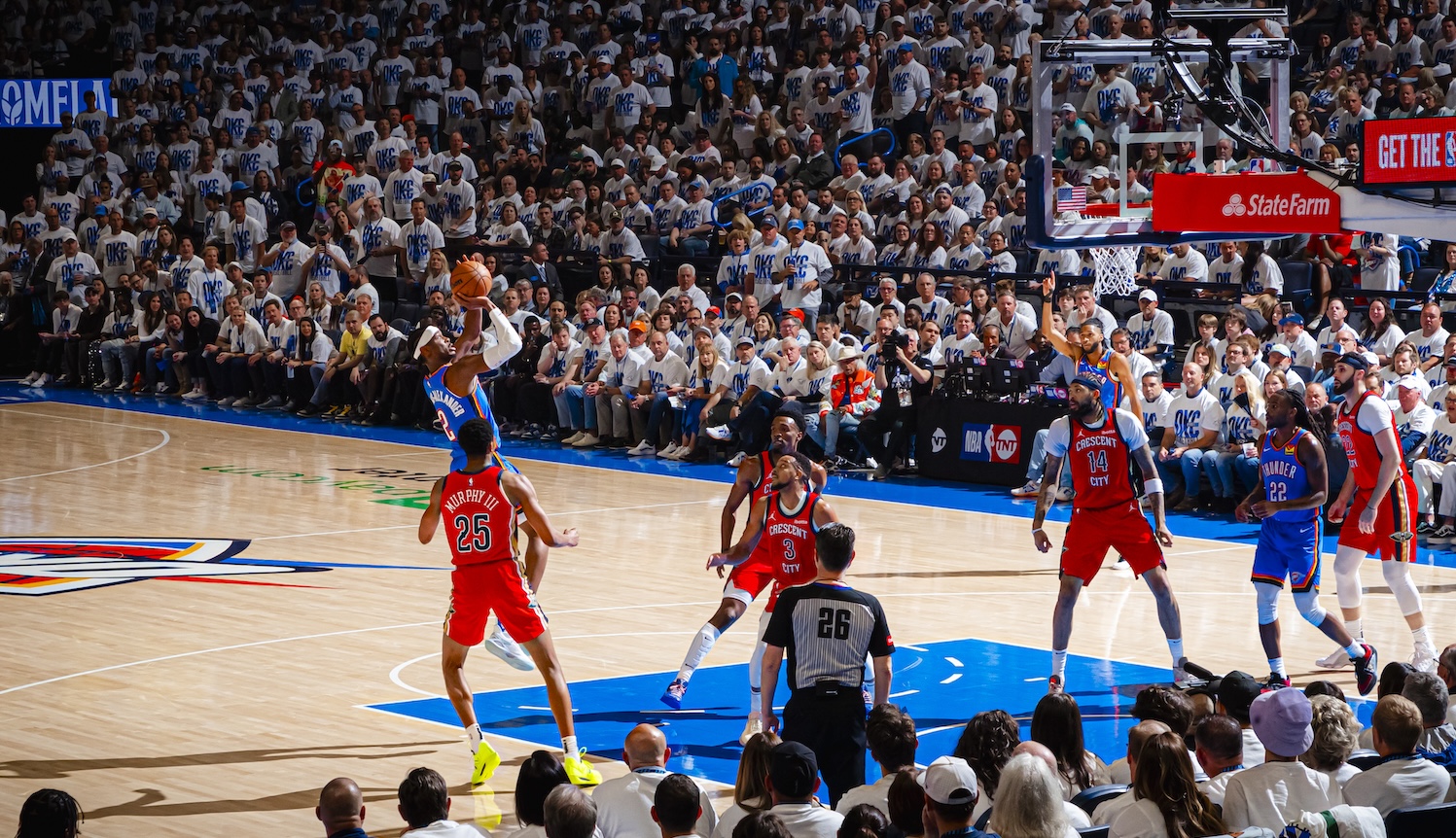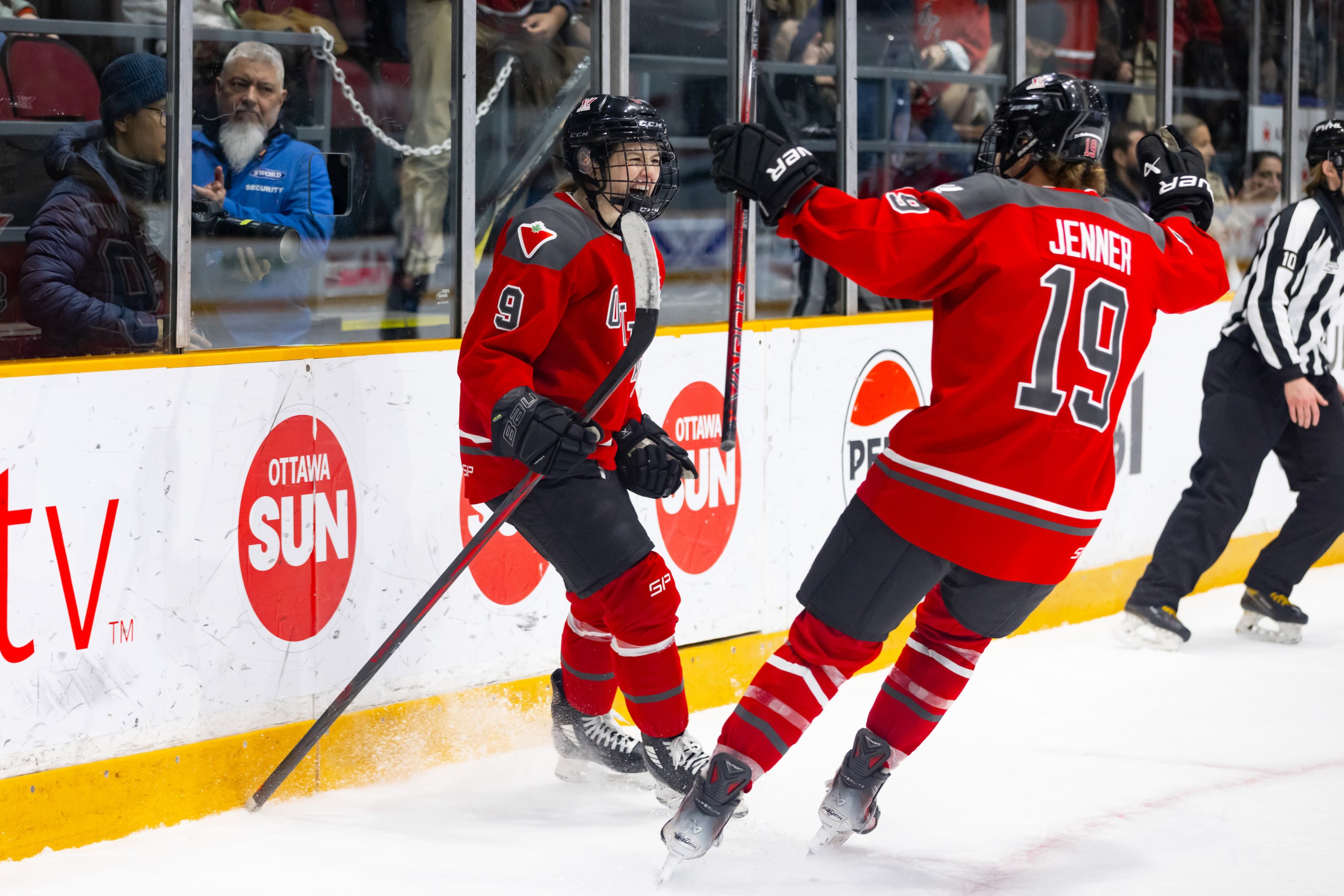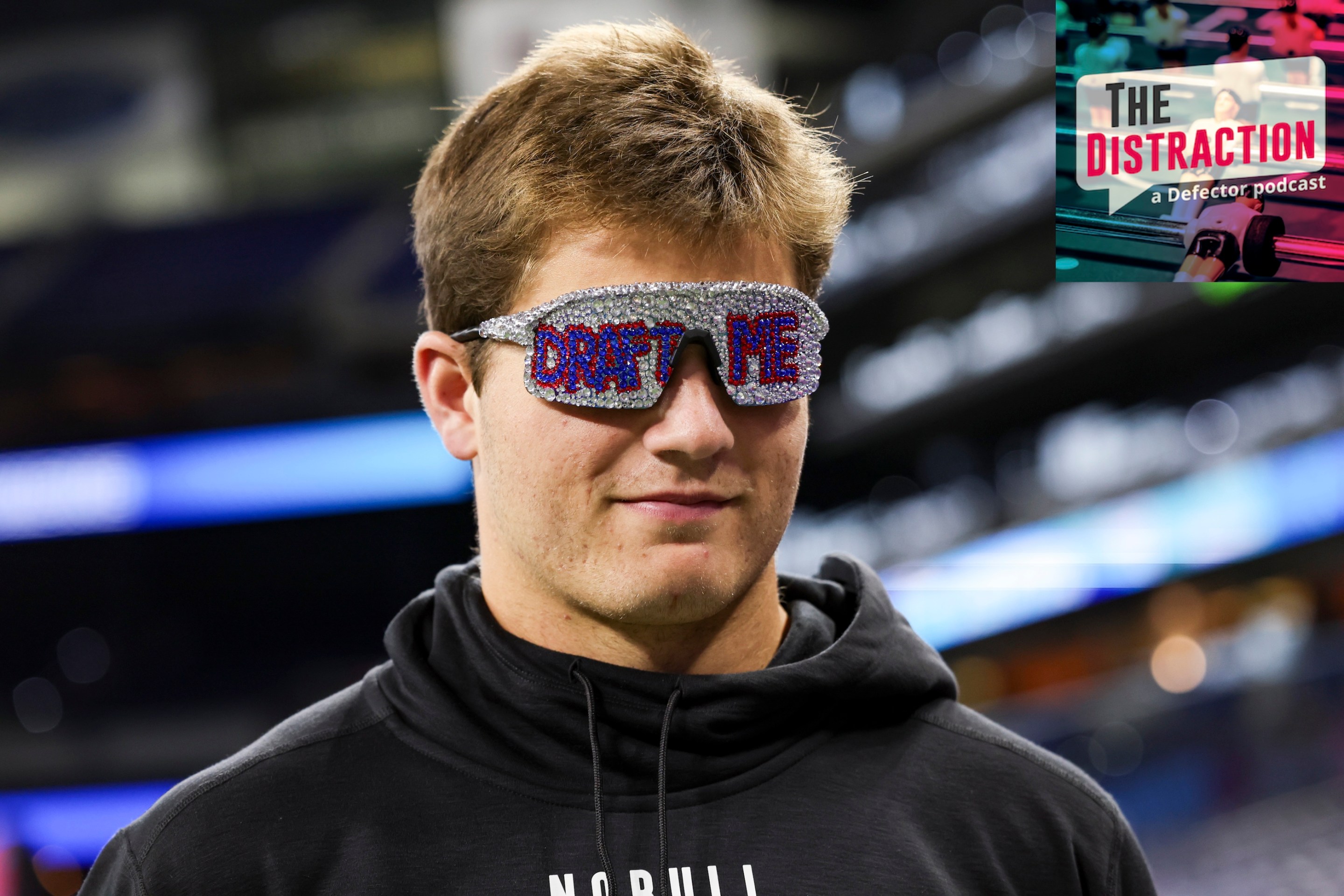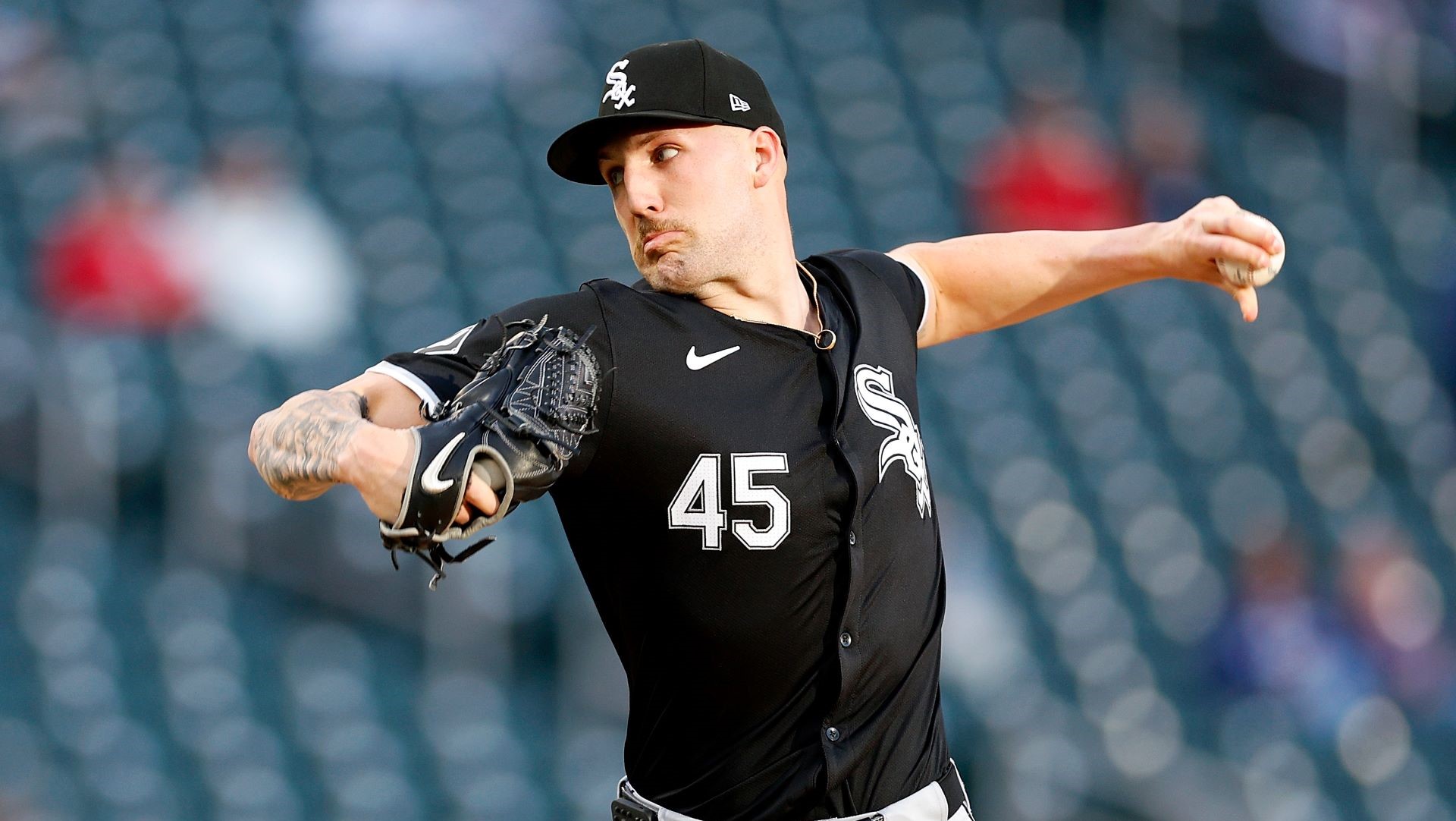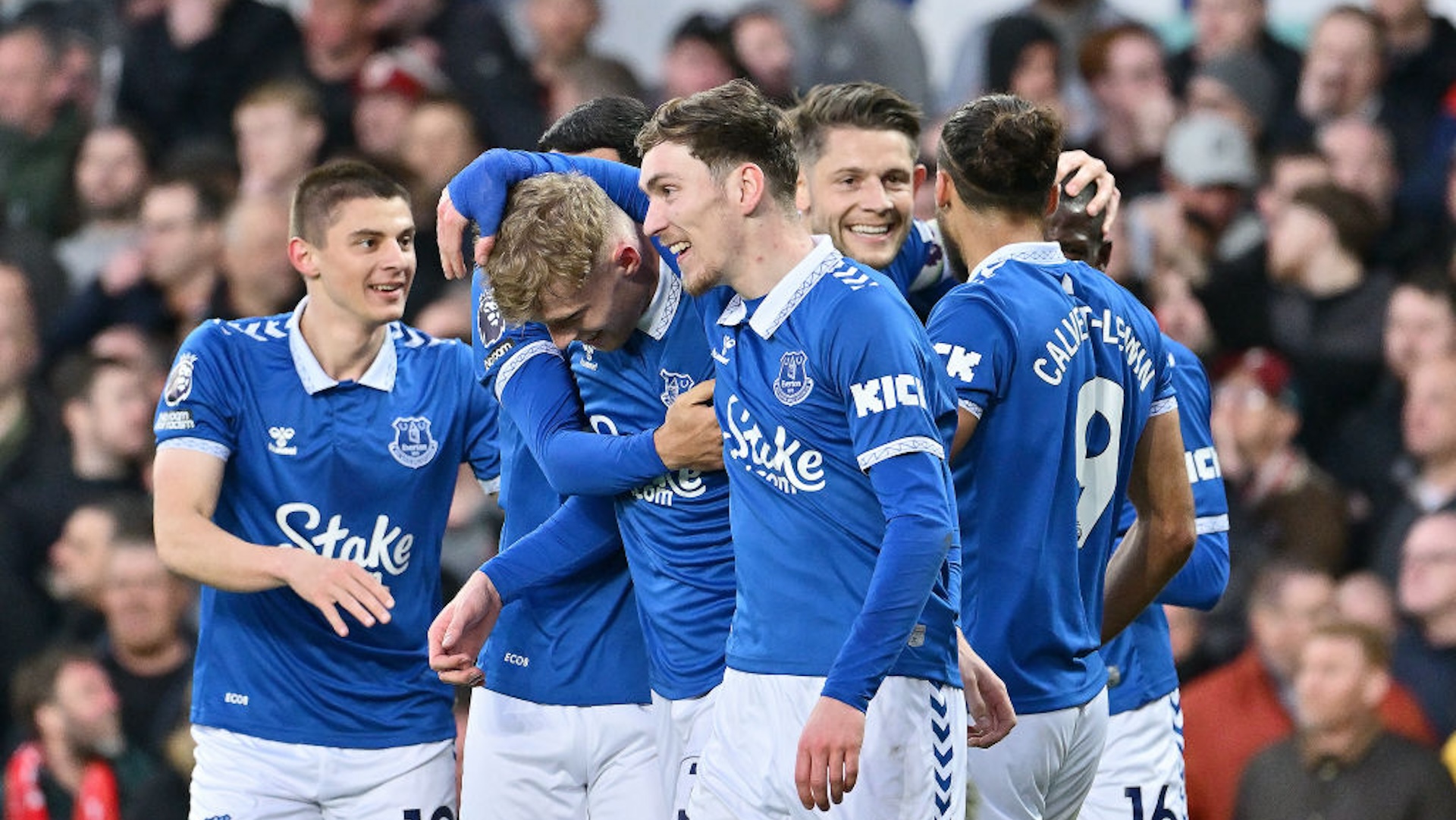The Short And Winding Road Of George Ringo, The Wrestling Beatle
2:12 PM EST on January 18, 2021
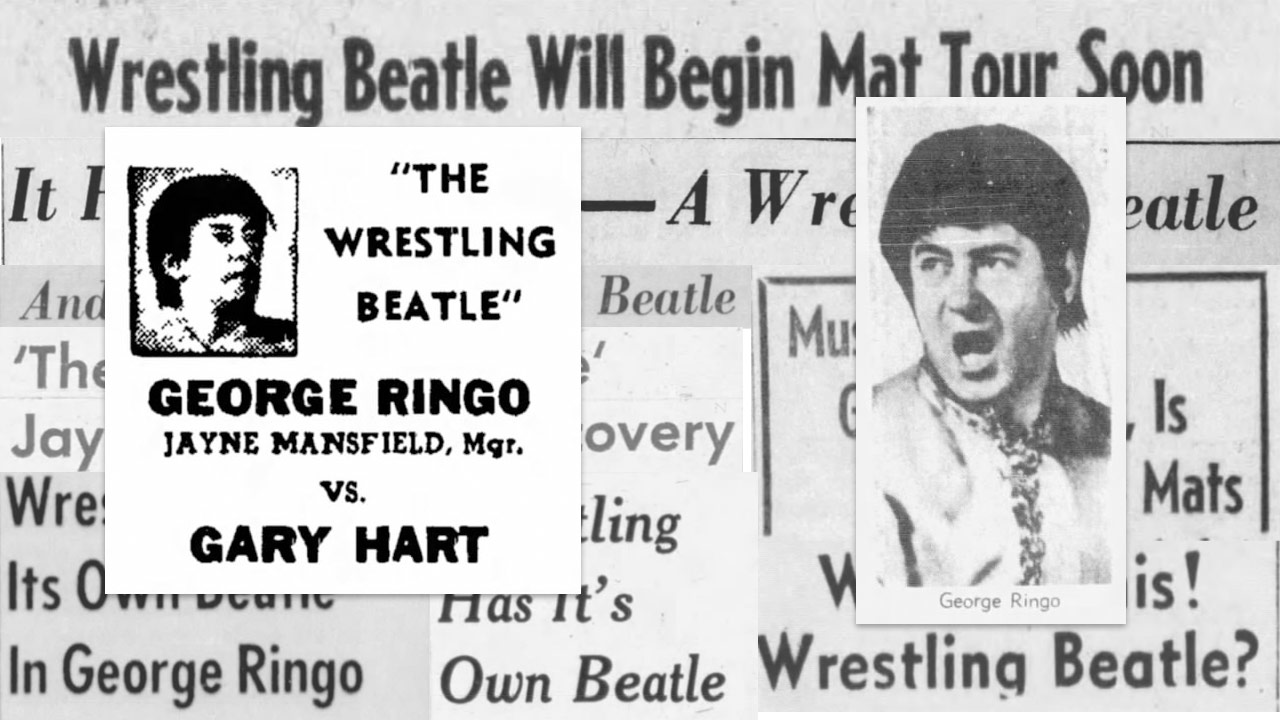
In February of 1964 the Beatles had appeared on The Ed Sullivan Show, kicking off a frenzy of Beatlemania across North America. Starting August 19, the band would tour the U.S. and Canada for 25 shows. One wrestling promoter was prepared. A few days before the tour began, Bob Luce introduced his new attraction: George Ringo, the Wrestling Beatle.
Luce told UPI George Ringo would be barnstorming the country on a schedule tied to the Beatles’ tour. He also claimed Ringo’s manager would be famous actress Jayne Mansfield—but the UPI couched that with a “maybe,” and said Luce had only secured her appearance in a one-car parade in Los Angeles later that month.
The article, which appeared syndicated in newspapers around the country, closed with a quote from Luce: “He's not great. But neither was George Wagner, and he made a fortune as Gorgeous George.” Admirable honesty, but perhaps not the best salesmanship. A 1971 retrospective said George Ringo “couldn’t mount a ‘convincing’ win in the ring even if he came armed with a shotgun.” Maybe it’s no wonder that the legend of George Ringo, the Wrestling Beatle, hasn’t grown with time. But there’s still a story to tell.
George Ringo, born Robert Duane, was in his late 30s, maybe a little too old to be the darling of screaming teenyboppers. He was not from Liverpool. He was not even English. (At least he didn’t try to fake an accent.) He was billed from Liverpool, N.Y., a real suburb of Syracuse. He did sport a mop-top haircut, like the Beatles.
He claimed announcers couldn’t pronounce his given name, so he generally went by Bob Sabre in the ring. (I’ll refer to him by that name here when he’s not George Ringo, as it's the name he used in life.) He’d wrestled a little in the AWA as an early-card jobber, a guy paid to lose convincingly. Mostly he wrote and took photographs for wrestling newspapers.
His tenure as a Wrestling Beatle was rather short, but it was easily the biggest run of his career. Cagematch, the wrestling database, lists just five matches for him under the George Ringo name, though I was able to find a handful of others in newspaper archives. At L.A.'s Olympic Auditorium on August 26, just three days after the Beatles’ famous performance at the Hollywood Bowl, Ringo would have the biggest match of his life.
“The big difference between me and these other Beatles is that I’ve got a BODY,” he said in a Los Angeles Times article a few days before his big match. He insisted it was his real name, and gave his origin story: “I never hit it big. And I decided to quit to play the guitar and sing. Then, all of a sudden out of England came the mop-heads. It opened a whole new career for me. People started calling me George Ringo, the Wrestling Beatle.”
Luce was right. He wasn't great.
But no matter. You don’t have to be great to be a drawing wrestler. Per Cagematch, on August 26, 1964, exactly 8,719 paying fans saw George Ringo beat Art “Boom Boom” Michalik in the penultimate match on a WWA card that also featured Bob Ellis beating Dick the Bruiser two falls to one in the main event. The match also aired on KTLA.
“I came in with this silly little outfit on, and the arena in Los Angeles had been drawing maybe a thousand people before that night,” Sabre remembered 13 years later. “I got up, and there were 15,000 people. I never saw so many little kids in all my life. They were screaming and ripping my jacket off, licking my arm … you wouldn't believe it. I never knew I could become an overnight sensation.”
It doesn’t appear that Jayne Mansfield appeared with him, though she was initially billed as having “discovered” him in a nightclub and continued to be advertised when George Ringo was coming to town wrestle. The day before George Ringo’s debut match, however, Mansfield was hanging out with the actual Beatles.
“Somebody conned us into going to the Whisky-A-Go-Go,” another George, Harrison, said later. “It seemed to take us 20 minutes to get from the door to the table and instantly the whole of Hollywood paparazzi descended. It was a total set-up by Jayne Mansfield to have pictures taken with us.”
The Beatles were in Indianapolis on September 3, and George Ringo wrestled Johnny King at the Indiana National Guard Armory in Anderson the same day. The next night, he defeated Tiger Longorio at Indianapolis’s South Side Armory. He then followed the Beatles to Canada, defeating Firpo Zbyszko at the Maple Leaf Gardens on September 10, doing a date in Buffalo as Bob Sabre, then beating Duke Noble as George Ringo a week later again in Toronto. It's unclear why Luce didn't think Buffalo was ready for George Ringo.
The Beatles returned to England at the end of September, but George Ringo continued to tour. He won a match in Chicago against Jungle Tiger on October 17. In December, while the Beatles were playing Christmas shows in London, George Ringo defeated Gary Hart (not the former presidential hopeful) in Holland, Mich. A recap in The Holland Evening Sentinel described the “wiry” Ringo clearing the ring with “a judo chop” and displaying “clever form and agility.” He lost the first fall, but took the second with a "flip." (I don’t know what this move is.) Then Ringo won the third and decisive fall, and the match, via count-out. I’m sure the audience of 825 fans left thrilled.
Beatlemania eventually ended with the breakup of the group. In 1977, promoter Luce gave an at-least-partially kayfabe (and fully impassioned) backstory of how the career of George Ringo ended:
I'm gonna get George Ringo the Wrestling Beatle! I want Jayne Mansfield to be his manager! Can you get a hold of the guy who Is her manager! He was the guy who was killed with her! I got a guy to be George Ringo the Wrestling Beatle! His name was Bob Sabre! I want to get you to play the guitar and play piano lessons! He had been losing! I told him I'm going to get pictures of you with George Ringo! His name was Ringo Starr! I went to the Amphitheatre! The Beatles were standing in front of the cameras! I had George Ringo the Wrestling Beatle! I went up to the Beatles photographer! He had on his London trench coat! He said I can't do it! He took a picture of George Ringo the Wrestling Beatle with Ringo Starr!George Ringo the wrestling Beatle sold out in LA! They're freaky out there! He went to Buffalo! Hans Schmidt! A very wicked guy! He beat George Ringo the Wrestling Beatle! Not only did he beat him! He smashed him over the head with the guitar! George Ringo the Wrestling Beatle called me! He said his guitar was smashed! I said what did you have the guitar in the ring for! He said I’m quitting! He forgot he was Bob Sabre! He thought he was George Ringo the Wrestling Beatle! These wrestlers! I won't say they're characters!
The end of George Ringo was not the end of Bob Sabre. He continued to write and photograph for industry magazines, and he continued to wrestle in preliminary matches, generally in the American Wrestling Association (in the Minneapolis area) and the World Wrestling Association (in the Indianapolis area). He’d also pop up as part of a semi-regular bit with Dick the Bruiser, the owner of the WWA.
The November 1970 issue of The Wrestler explains the gag: Dick the Bruiser wanted to face, in a handicap match, Blackjack Lanza and manager Bobby Heenan. But the promotion wouldn’t let him wrestle in a handicap match, so he found the worst wrestler possible to be his partner: the man now billed as just "Ringo." The magazine showed photos of Bobby Heenan completely covered in blood after the match. So, yes, in a way George Ringo the Wrestling Beatle once beat Bobby Heenan in a hardcore match.
Sabre ended up running a wrestling school at the old Ravenswood YMCA in Chicago. A 1977 profile of him in the Chicago Tribune says he’d train a few die-hards, then take them on a small tour in the midwest.
“We’re living in a violent age,” he told the paper. “And the closest thing to a live riot is professional wrestling. When the main event comes on, everybody’s yelling, ‘We want blood.’ It's like the old gladiators. They don't yell that for any other sport.”
Kevin Clark, a wrestler known as the Zebra Kid who died in April of last year, was trained by Sabre. In a series of videos made before his death, Clark praised Sabre for getting him his start.
“I owe everything to Bob," he said in one video. "He trained me, he was a mentor for me, he was a friend. Later, after I broke into the business, we promoted together. When I got married, Bob was my best man.
"Years and years later, Bob came down with colon cancer, and he grasped at every straw, he weighed a solid 240, 245 pounds, and in no time, he went down to maybe 90 pounds, laying in a hospital bed in a fetal position. I would go up and visit him almost every day once they put him in the hospital at the final stages.”
Sabre died in 1989 in Chicago. Clark said his funeral was attended by a collection of his former students, a group of onetime and wannabe pro wrestlers swapping stories about the man who once, and very briefly, found fame as the Wrestling Beatle.
If you liked this blog, please share it! Your referrals help Defector reach new readers, and those new readers always get a few free blogs before encountering our paywall.
Visual Editor. Runs defectorstore.com. Philadelphia-based, if you couldn’t tell. dhm@defector.com
Stay in touch
Sign up for our free newsletter
